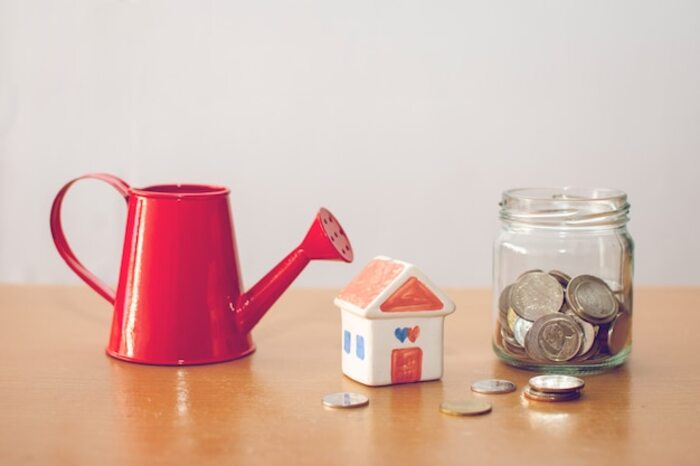Build your way to an affordable home with effective savings.

Building an affordable home is not just a dream, but an achievable goal with the right approach. In this article, I will guide you on the path to creating your own space without straining your budget. Through practical strategies and effective tips, you will learn to maximize your savings and plan each step with financial intelligence. Get ready to transform your housing vision into a tangible and sustainable reality.
1. Setting clear financial goals for your home
Setting clear financial goals is the first fundamental step to building an affordable home. Before diving into the search for your ideal space, it is crucial to define what "affordable" means to you. This involves assessing your current income and expenses, and from there, identifying a realistic budget that you can maintain in the long term. Ask yourself how much you can allocate monthly to housing payments without compromising other essential areas of your life, such as food or savings for emergencies. The key here is to be honest with yourself and establish concrete figures that will guide your future decisions.
Once you have set your budget, it's time to set specific goals. These may include saving a certain percentage of your income each month or gathering a specific amount for the down payment on a home. Remember to break your objectives into short, medium, and long-term; this will allow you to monitor your progress and adjust your efforts as needed. By having well-defined goals, you will not only motivate yourself to keep going, but you will also be able to celebrate small achievements along the way to creating the affordable home you desire.
2. The importance of a realistic budget
A realistic budget is the cornerstone for achieving your goal of an affordable home. Without proper financial planning, it's easy to fall into the trap of unnecessary expenses and impulsive purchases. By setting a clear budget, you can identify your monthly income and expenses, allowing you to have an accurate view of how much you can save and allocate towards building or buying your home. This approach will help you prioritize what is essential and avoid unpleasant surprises along the way.
Additionally, a well-structured budget not only keeps you on track toward your housing goal, but also fosters healthy financial habits. By regularly tracking your expenses and adjusting your budget as needed, you will develop a greater awareness of your personal finances. This not only prepares you to better handle unexpected costs that may arise during the process of building or acquiring a home, but also gives you the peace of mind necessary to focus on what truly matters: creating a space where you can fully enjoy your life.
3. Effective strategies to reduce daily expenses
To reduce daily expenses, it is essential to adopt habits that align with a more conscious and sustainable lifestyle. One of the most effective strategies is to meticulously track your spending. Use mobile apps or a simple spreadsheet to record every purchase, from large expenses to small indulgences. This will not only allow you to identify areas where you can cut back, but it will also encourage greater accountability in your financial decisions. By having a clear view of where your money is going, you can set priorities and allocate resources to what is truly necessary.
Another essential strategy is to learn to plan your meals weekly. Food represents one of the largest items in the family budget, and by organizing yourself in advance, you can avoid impulse purchases and unnecessary waste. Create a menu that includes simple and economical recipes, based on seasonal and on-sale ingredients. Additionally, consider the possibility of batch cooking to make better use of food and reduce the time spent in the kitchen during the week. With these simple yet effective practices, you will be taking concrete steps towards an affordable home without sacrificing quality or well-being.
4. Financing options: which one is best for you?
When considering financing options for your home, it is essential to evaluate which one best fits your needs and financial situation. From traditional mortgages to construction loans, each option has unique characteristics that can influence your decision. Conventional mortgages typically offer competitive interest rates and flexible terms, while FHA loans may be ideal if you have limited credit or need a lower down payment. Additionally, exploring local or state assistance programs can provide you access to additional resources that can make your path to ownership easier.
Don't forget the importance of carefully analyzing the terms and conditions associated with each financing option. Make sure to consider not only the interest rate but also additional costs such as insurance and closing fees. It is also advisable to compare different lenders and request pre-approvals to have a clear idea of the budget you have. Taking the time to research and understand the available alternatives will allow you to make informed decisions that maximize your long-term investment, bringing you closer to that affordable home you desire.
5. How to take advantage of government housing programs
Taking advantage of government housing programs can be one of the most effective strategies for those looking to build an affordable home. These programs are designed to provide financial support and resources to buyers, which may include grants, loans with reduced interest rates, or even direct assistance in purchasing land. Researching what options are available in your area is essential; many times, these programs are underutilized due to a lack of information. Do not hesitate to consult with local government entities or nonprofit organizations that specialize in housing for advice on how to access these aids.
Additionally, it is important to be aware of the requirements and criteria established to qualify for these programs. Some may be specifically aimed at certain demographic groups, such as low-income families, veterans, or first-time homebuyers. Preparing the necessary documentation and meeting the specific criteria not only increases your chances of receiving assistance but also allows you to better plan your finances. Remember that each program has different deadlines and benefits, so staying informed will help you make better decisions on the path to your ideal home.
6. Smart investments: increasing the value of your property
Smart investments are a key element in increasing the value of your property and ensuring it is a profitable long-term investment. When considering improvements to your home, it is essential to focus on those that not only beautify the space but also provide a significant return. For example, renovating the kitchen and bathrooms is often one of the best decisions, as these areas are crucial for both your daily comfort and the appreciation of the home's value. Additionally, investing in efficient and sustainable technology, such as modern heating and cooling systems or solar panels, can reduce operating costs while appealing to future buyers interested in more eco-friendly properties.
In addition to internal renovations, the exterior of your home also plays an important role in its valuation. Improving the facade with fresh paint or well-designed landscaping can provide a striking first impression and increase the overall appeal of the property. Other options include the installation of terraces or outdoor patios that enhance the functionality of the outdoor space, creating perfect areas for entertainment and relaxation. In summary, every strategically invested dollar not only improves your current quality of life but also translates into a significant increase in the property's value in the long term, making your efforts to build an affordable home even more rewarding.
7. Myths about buying a home that you should know.
When addressing the topic of home buying, it is essential to demystify certain popular beliefs that may lead you to make erroneous decisions. One of the most common myths is that you need a large down payment to acquire a home. While having a good percentage of the total price is advantageous, many financial institutions offer accessible financing options with minimal entry requirements. There are government programs and alternatives that allow buyers to access homes with much lower deposits, making the dream of homeownership achievable for many.
Another common misconception is thinking that a perfect credit score is needed to obtain a mortgage. While a good credit history can make the process easier and improve interest rates, there are options available for those with less than ideal credit. Various entities offer loans specifically designed for people with different credit levels, which opens the door to many possibilities. Understanding these myths will allow you to better navigate the real estate market and move towards building your affordable home without the limitations imposed by these misconceptions.
8. Digital tools to manage your savings efficiently
Digital tools have revolutionized the way we manage our personal finances, and this is especially useful when it comes to saving to build an affordable home. Budgeting apps like Mint or YNAB (You Need a Budget) allow users to track their expenses in real time, categorize their income, and set specific savings goals. These platforms provide detailed analyses that make it easier to identify areas where expenses can be cut, allowing you to redirect those funds toward your housing goal. Additionally, many of these tools come with automatic notifications to remind you of your goals, keeping you motivated on the path to homeownership.
Another valuable option is online financial calculators, which help you plan not only the savings needed for purchasing a home but also the associated costs such as taxes, insurance, and maintenance. Tools like Zillow or Realtor.com not only allow you to explore available properties within your budget but also provide estimates of the total cost of homeownership. By using these digital tools regularly, you can make informed and strategic decisions that not only optimize your savings but also bring you closer to that affordable home you wish to build.
9. Inspiring stories: people who achieved their affordable home
The stories of people who have managed to build an affordable home are true sources of inspiration and motivation. Take the case of Ana and Carlos, a couple who, after years of renting, decided to take the leap into buying their first home. With a limited budget, they focused on a clear strategy: cutting unnecessary expenses and allocating those savings to a down payment fund. Through months of careful planning and temporary sacrifices, they managed to gather the necessary amount to acquire a small apartment in an emerging neighborhood. Their story demonstrates that with determination and good financial management, it is possible to achieve goals that seem distant.
Another notable example is Javier, a young single man who dreamed of having his own space. He started by sharing accommodation with friends to minimize costs while working to increase his income through freelance jobs. He took an ingenious approach by seeking opportunities within the real estate market; he eventually found a run-down property that he could restore little by little thanks to his craft skills and passion for DIY. Today, Javier not only has a cozy home but also valuable experience that has taught him about smart investing and the benefits of being proactive in seeking affordable solutions. These stories remind us that each path to owning a home can be unique, but they all share the key of conscious effort and perseverance.



